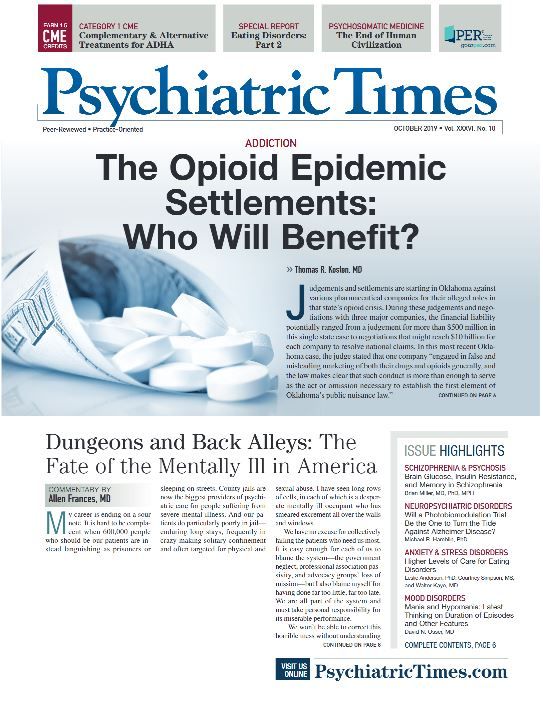Publication
Article
Psychiatric Times
Celebrity Suicide
Author(s):
Durkheim believed it was useless to prohibit newspapers from publishing stories of the ultimate act of self-harm. But he was wrong.
©Jade/AdobeStock

Patients who are at risk need to be assessed, monitored, and seen often. Their grief needs to be acknowledged, whether or not the object of grief was known to them.
PORTRAIT OF A PSYCHIATRIST
– Series Editor, H. Steven Moffic, MD
Dr Seeman is Professor Emerita, Department of Psychiatry, Institute of Medical Science, Toronto, Canada. She reports no conflicts of interest concerning the subject matter of this article.
On August 5, 1962, Marilyn Monroe was found dead of an overdose of barbiturates. I was a second-year psychiatry resident in New York City at the time, and I remember exactly where I was when I heard of her death. The sad news shook the staff and dazed the patients in our all women’s hospital ward. The ripple effect of Marilyn Monroe’s death can still be felt today simply by counting the number of books and films dedicated to the stories of Marilyn’s deprived childhood, her astonishing Hollywood career, and the fame and glamour of the men in her orbit, not to mention the psychiatric theories about her mental illness and the many conspiracy theories that continue to surround her death.
The female patients for whom I was responsible were particularly devastated by the news of her death because they identified with her in so many ways. Many had experienced similar childhoods in foster care, had aspired to be film stars, and had suffered through difficult relationships.
As it was summer when this happened, the head of our ward was on vacation in Europe. This left me temporarily in psychiatric charge.
Once I realized how deeply Marilyn Monroe’s death had affected my patients, I knew that some form of intervention was urgently needed. I immediately invited patients to join a support group that I would lead. I had led groups before-these were fairly routine on our ward. I knew how to be emotionally supportive and how to listen. I was confident that I was good at bringing people out. I had all the brash self-assurance of the very naïve.
Our group of eight got off to a good start. We cried and shared our feelings. The women talked about their suicidal urges. “Her life was so great compared to mine,” one woman said. Everyone agreed, as she added, “She was rich; she was beautiful; she was talented. Look at all the men who loved her!”
“This group is a catharsis,” I proudly pronounced to my fellow residents.
But this is what happened next. Three of the women in the group attempted suicide, one very seriously. Fortunately, all three survived. The head nurse, frightened by what had happened, contacted the head of our ward in Europe. He immediately cut his vacation short and returned to New York. The first thing he did was to end the group. Then, he gave me the worst dressing down of my life. I thought it was the end of my residency, but he allowed me to stay. What came to an end was my early confidence in myself as a therapist. Since then, there has always been a seed of doubt when I see a patient. I now ask myself, “By stirring the pot, am I perhaps doing more harm than good?”
It was not as if I hadn’t read up on suicide. I had read Ãmile Durkheim’s work in my first year. In the French sociologist’s 1887 study on anomie, he had in fact underplayed the effect of imitation as a critical factor in suicide.1 Durkheim believed it was useless, for instance, to prohibit newspapers from publishing suicide stories. But he was wrong. Human beings are very easily influenced. What my Marilyn Monroe group had done was to bring together eight vulnerable women who, with the complicity of their group leader, had laid fertile ground for intense behavioral contagion.2 I had unknowingly created a suicide cluster.3,4 Out of a mix of would-be Marilyn Monroes, raw emotions, media prodding, and myself as a greenhorn therapist, the belief had emerged that suicide was the answer to distress.
Today, this is called the Werther effect after the widespread emotional reaction to the 18th century novel The Sorrows of Young Werther by the famous German writer Goethe.5 The story is about an unhappy lover who ends his life with a pistol. At publication, the book precipitated a massive wave of imitative suicides throughout Germany and much of Europe. This response was not unlike what took place the month after Marilyn Monroe’s death when there was a 10% increase in suicides in the US.6[PDF]
More recently, there has again been much discussion about the potentially contagious effect of celebrity suicide. According to one article, the suicide of film stars is especially dangerous because there are many facets of the person’s real life that are widely known because of extensive media coverage and that consequently serve as springboards for identification.7 In addition, people identify with various aspects of the characters a film star has portrayed. Marilyn Monroe is a case in point. The obsession with her suicide continues to this day, almost 60 years after her death.
The sources of copycat suicides go beyond identification. By using new technology to analyze the emotional tone after celebrity suicide tweets, recent studies conclude that the unexpectedness of the suicide contributes to the likeliness of it being imitated.8,9 A surprising, unexpected suicide seems to shake people out of their habitual routine into serious reconsideration of their reasons for living and, at times, into impulsive action.
Are there lessons here for clinicians? I think there are. In the wake of a celebrity suicide, it is wisest to express neither shock nor surprise to one’s patients. Patients who are at risk need to be assessed, monitored, and seen often. Their grief needs to be acknowledged. They also need assurances that you understand, are available, and that there are ways, admittedly difficult, by which one can overcome adverse circumstances and survive anguish. Persuading someone that viable alternatives to suicide exist has been called the Papageno effect in honor of the character Papageno in Mozart’s opera The Magic Flute. In the plot, Papageno decides to hang himself because he is convinced that he has forever lost his one true love, Papagena. Three child spirits prevent his death, however, by showing him how he can summon her back.
My own experience suggests that overzealous intervention is not a good idea and that it is best to check with elders in the field who are more experienced before leaping into unknown therapeutic territory. Sensitive topics such as thoughts of suicide need private one-on-one discussion, not group therapy. Membership in a group transforms a person and the results of such transformations can be difficult to foresee.
Originally posted on 9/10/19 and has since been updated.
References:
1. Durkheim E. Suicide: A Study in Sociology. New York: Free Press; 1966.
2. Wheeler L. Toward a theory of behavioral contagion. Psychol Rev. 1966;73:179-192.
3. Haw C, Hawton K, Niedzwiedz C, Platt S. Suicide clusters: a review of risk factors and mechanisms. Suicide LifeThreat Behav. 2013;43:97-108.
4. Niedzwiedz C, Haw C, Hawton K. Platt S. The definition and epidemiology of clusters of suicidal behavior: a systematic review. Suicide Life Threat Behav. 2014;44:569-581.
5. Phillips DP. The influence of suggestion on suicide: substantive and theoretical implications of the Werther effect. Am Sociol Rev. 1974;39:340–354.
6. Seeman MV. The Marilyn Monroe group and the Werther effect. Case Rep J. 2017;1:004.
7. Stack S. Celebrities and suicide: a taxonomy and analysis, 1948-1983. Am Sociol Rev. 1987;52:401-412.
8. Fahey RA, Matsubayashi T, Ueda M. Tracking the Werther effect on social media: emotional responses to prominent suicide deaths on twitter and subsequent increases in suicide. Soc Sci Med. 2018;219:19-29.
9. Ueda M, Mori K, Matsubayashi T, Sawada Y. Tweeting celebrity suicides: users’ reaction to prominent suicide deaths on Twitter and subsequent increases in actual suicides. Soc Sci Med. 2017;189:158-166.







